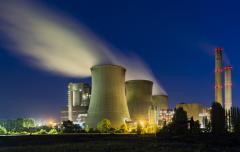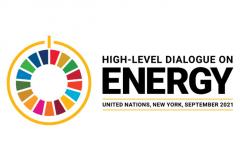Energy Transitions Commission: How global warming can be limited to 1.5 degrees
Keeping 1.5 Alive: Closing the Gap in the 2020s by the Energy Transitions Commission (ETC) sets out the actions which nations and companies could take during the 2020s to deliver the Paris agreement and limit global warming to 1.5°C.
It is now clear that nationally determined contributions (NDCs), made as part of the Paris climate accord, fall far short of those needed to prevent global warming from exceeding 1.5°C above pre-industrial levels. An additional 17-20 Gt of CO2 reductions and a 40 percent reduction in methane emissions would be needed to achieve that objective.
But the ETC’s new report describes technologically feasible actions which could close that gap to a 1.5°C pathway and which could be catalysed by agreements at the upcoming COP26 climate summit in November in Glasgow. Many of the actions entail minimal cost and would spur further innovation and support green economic development; and all of them could be given impetus at COP26 via commitments from leading countries and companies, without the need for comprehensive international agreement.
“Several actions proposed in this report are aligned with the UN Energy Compacts that were presented at last month’s UN High-level Dialogue on Energy. The clean energy funding committed by national governments, the private sector and catalytic partnerships in these Compacts amounted to more than USD 400 billion for energy access and the energy transition. As the global community meets at COP26, there is an urgent need to build on this momentum to further raise ambition to meet the global climate agenda with decisive energy action.”
Damilola Ogunbiyi, CEO and SRSG for Sustainable Energy for All
Two high priority actions – ending deforestation and reducing emissions from existing coal plants – will need to be supported by climate finance flows from rich developed countries.
Other actions identified by the ETC are:
1. Significant and rapid reductions in methane emissions. The latest report from the UN Intergovernmental Panel on Climate Change (IPCC) shows that methane emissions have accounted for around 40 percent of past global warming, and reducing these emissions is the most powerful lever available to limit global warming as soon as possible. But many NDCs place insufficient focus on methane. Low-cost actions could cut fossil fuel-related emissions by 60 percent by 2030, while emissions arising from agriculture and waste management could potentially be cut by 30 percent.
2. Halting deforestation and beginning reforestation. Halting deforestation, beginning reforestation and improving other land-use practices could reduce emissions by 6.5 Gt per year by 2030. Achieving this will require financial support from rich developed countries and should be a priority use of committed climate finance
3. Decarbonising the power sector and accelerating the phaseout of coal. Coal-fired electricity generation is the single biggest source of greenhouse gas emissions, but it is increasingly uneconomic against renewables. An immediate ban on the construction of new coal-fired power plants, combined with a phaseout of existing coal plants could deliver 3.5 Gt of additional emissions reductions per year by 2030. All rich developed countries should commit to total phase-out by 2030, and climate finance flows from developed economies should support a gradual phase-out in developing countries.
4. Accelerating the electrification of road transport. The shift to electric vehicles (EVs) promises to save consumers money in fuel costs and maintenance while eliminating one of the largest sources of air pollution. A ban on selling internal combustion engine light-duty vehicles, instituted by 2035, would cement this shift. Commitments by major fleet operators to fully electrify their vehicle fleets at still earlier dates would be a powerful driver of change. An additional 2.3 Gt per year of emission reductions could result from such actions by 2030.
5. Accelerating supply decarbonisation in buildings, heavy industry, and heavy transport. Eliminating emissions from these sectors will extend beyond 2030. But progress in technology and cost reduction is making possible faster reductions than most NDCs currently assume. Commitments by leading companies and countries in steel, cement, shipping and aviation could deliver an additional 1 Gt per year of emissions reductions, with a further 1 Gt per year potentially delivered through accelerated electrification of electric heat.
6. Reinvigorating energy and resource efficiency. Despite big opportunities to achieve low-cost emissions reduction via improvements in energy and resource efficiency, recent progress has been disappointingly slow. But progress could be accelerated via action at COP26, building on existing initiatives to spur efficiency improvements in buildings and appliances.
The Energy Transitions Commission is a global coalition of leaders from across the energy landscape committed to achieving net-zero emissions by mid-century, in line with the Paris climate objective of limiting global warming to well below 2 degrees C and ideally to 1.5 degrees C. Damilola Ogunbiyi, CEO and SRSG for Sustainable Energy for All, serves as one of the Commissioners of the ETC.




